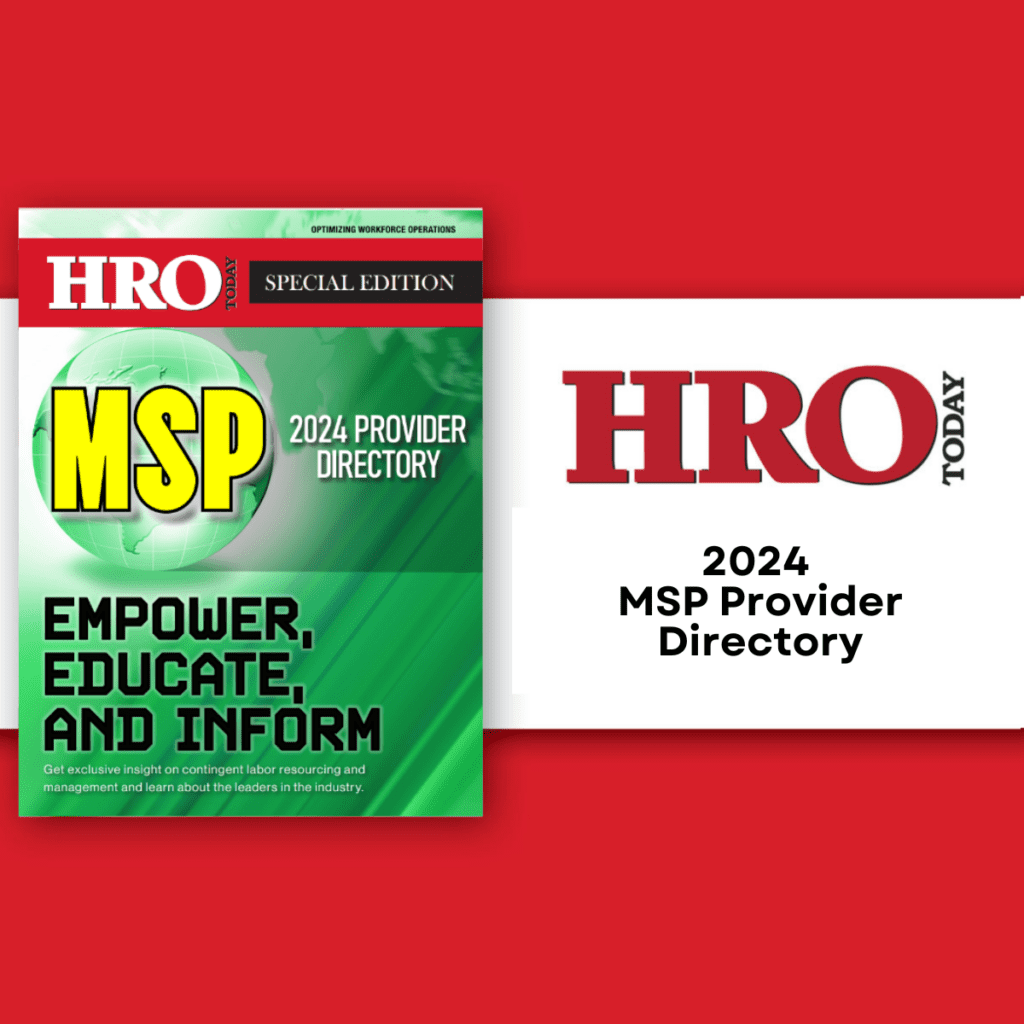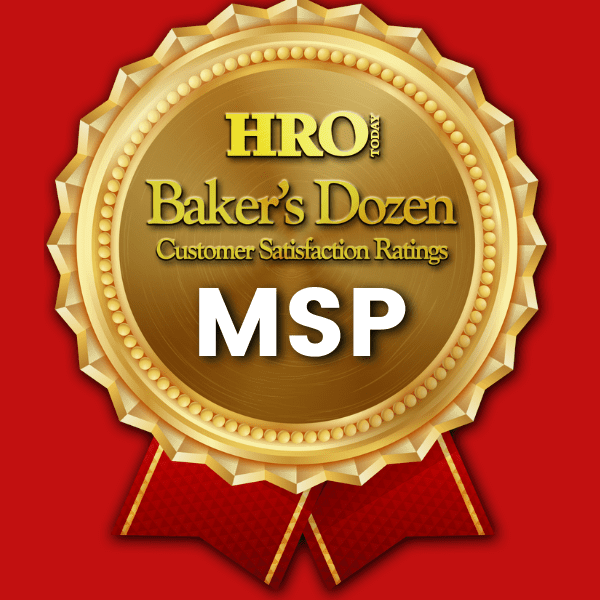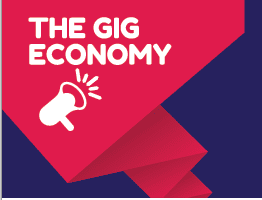Bill Hatton
One key: How well you can use the data and analytics fl owing from the latest Vendor Management Systems (VMS) upgrades to improve your contingent labor planning, especially as contingent labor becomes more and more important to company success. HR professionals that manage these transitions and grab opportunities fl owing from VMS data will give their companies a competitive advantage in talent, and those who don’t will be left behind.
Trends driving change
What is driving change -and what changes can you expect in 2016?
“Fundamentally, there has been an evolutionary shift in how work gets done within a corporation,” says Arun Srinivasan, SVP, Strategy and Customer Operations, for VMS provider Fieldglass. “This is driven by the business needs of the corporation to control costs and drive compliance, while moving to a model where it’s engaging more and more external workers.”
Also driving this evolutionary shift: The mobility of the workforce and an increased focus on project-based work, as opposed to generic, functional work. It’s not just volatility from seasonal employment.
“Engagement of an external workforce is now a permanent part of a corporation’s workforce strategy,” says Srinivasan. “It used to be a temporary measure to manage the ebb and flow of supply and demand, but now it is a core part of business strategy and a global trend. Finance, IT, light industrial work, marketing, facilities management, etc.”
Similarly, George Lanzano, executive director of business solutions for global MSP programs for workforce solutions provider Staff Management | SMX, identifies the biggest changes expected for 2016: “The continued emergence of statement of work and project-based engagements facilitated through the MSP and through the VMS.”
HR professionals need to understand the functionality in the VMS that is available to support statement of work projects. “MSP and VMS are being used to gain visibility and cost control around the amount of spend,” Lanzano explains.
Emerging areas: Lanzano says VMS functionality and scheduling functionality allow the MSP to forecast volatility of workforce at a shift level. “They have made some effort to align with the fluctuating nature of a dynamic workforce, and greater alignment with workforce volatility for high-volume users.”
The VMS market provider trends
What changes are expected in the actual VMS markets? NelsonHall HR Outsourcing Research Director Gary Bragar provides this lay of the land:
• VMS technologies such as Fieldglass will develop greater total workforce visibility of both permanent and contingent talent. Local markets will get improved coverage.
• You can expect your VMS to start to offer integration with freelance management systems. Some vendors will invest to make future investments in integrating MSP with FMS, and staffing organizations and VMS vendors are acquiring FMS platforms.
• VMS vendors will seek to offer change management support, especially where there is a need to upgrade VMS to support business growth globally. Example: A company may require global visibility of its contingent workforce to standardize practices across borders.
• Local technologies may be needed to support specific countries when MSP programs are running across multiple regions. VMS systems are often limited in their geographic capabilities.
• Your vendor will likely step up greater offerings in analytics and consulting. About 50 percent of vendors are increasing capabilities to aggregate client data. You want trend analysis by geography, supplier, worker type, job family, and industry.
“Vendors need to demonstrate ongoing value through improved strategic workforce planning through analytics portals and developing a strong workforce consulting offering,” explains Bragar. “Keys will be building partnerships with clients and obtaining greater visibility of workforce insights of the client environment as well as the supply base, to better manage the uncertainty in demand volumes.”
Using data and analytics strategically
How can you use data and analytics effectively? It starts with understanding the goals of each stakeholder group in your organization, what the technology has to offer for each group, and how HR can support the others, says Lanzano.
“The needs of the groups vary,” says Lanzano. “Human Resources needs data related to clients and tenure. The operations group needs data on turnover, attendance, and time-to-fill. Procurement needs data on cost savings and supplier rates.”
In HR, you typically want visibility into the headcount, to know prescreening has been done, and that you have mitigated risk of co-employment associated with managing tenure. “Within the tenure numbers are the strategic management of the workforce numbers,” says Lanzano. “Should these positions be full time, are they permanent disguised as temp, or is there co-employment risk?”
Fieldglass’s Srinivasan says that HR needs to grab this data to assume a more strategic and competitive role: “It’s no longer sufficient to just execute on the HR functions. With the changing composition of the workforce, you have to go above and beyond to help the lines of the business.”
Best-in-Class Traits
Some traits of best-in-class HR practitioners for using data to manage contingent labor, says Srinivasan, include the following:
• Leveraging data to achieve real-time visibility. NelsonHall’s Gary Bragar says that visibility is a key to effective sourcing – you need data on market contractor rates, for example. Labor market visibility can give you insight into optimal fulfillment rates, he says, “either through effective supply chain management or through targeted direct sourcing and talent pooling approaches.”
• Understanding who your total workforce is. How many of those are employees? How many are non-employees? Where are they based? How are they categorized based on job titles, skills, and qualifications? Srinivasan says, “What follows from the basic analytics is the ability to match the need for a job requisition or a certain body of work to be done. You can match that to the various available sources of talent. So the talent could be coming from within the organization from your employee pool, or from your external talent.”
• Realize HR is well-positioned to best serve internal clients. HR can direct internal clients to the appropriate source based on the business need, based on what’s needed, how long, what are some of the cost constraints around it, and the kind of skills that are needed. “Access to that data leads to better decision making,” says Srinivasan.
• Define the rules of engagement across the organization and globally. That reduces risk and assists with compliance when engaging external workers. “HR professionals can use solutions like Fieldglass to not only define the rules of engagement, but also automatically enforce those rules of engagement across the organization.” These rules include things like co-employment, local guidelines when you onboard an external worker, when you off-board an external worker, when you direct their work -what kind of guidelines are needed? Finally, when you evaluate the work product, what kind of metrics can you employ to evaluate the work product?
• Have a goal of a more holistic talent vision. These metrics all allow you to conduct your long-term planning. You know which operations are issuing which job requisitions, and can plan in advance as you develop trend data and they forecast their needs. “Better workforce analytics gives you a better feel for what’s happening within the organization, through your payroll employees and what’s happening through the external talent pool of contingent workers,” Srinivasan says.
“The most important thing to note is that the composition of the workforce is changing under you, and you’re being challenged by the business to be a stronger enabler within the organization,” Srinivasan says.
What’s getting in the way?
Right now, companies are operating at varying levels of maturity. For the less mature, the basic questions about their employees may be siloed or not available. So they don’t know how many workers they may have in total, including employees and non-employees. They may not know their skill levels. And they may not have much information at all about non-employees, despite that group being a large percentage of the total workforce.
Result: Difficulty accessing the metrics needed for decision-making. That in turn leads to unpleasant surprises, such as unfilled positions, and reduced business performance.
“Let’s say in the world of IT, as part of your workforce planning you need a few hundred java programmers in 2016,” Srinivasan says. “Now, if you had access to the analytics around your total workforce, you’re in a better position to say, ‘Today, what is the mix that I have?’ How many Java programmers do I have as part of my employee base? How many do I have engaged across my organization that are part of the external talent base?”
Srinivasan continues: “And then what should be the mix moving forward in 2016 based on our business initiatives and also based on where we get the most value? In some cases it may mean that we need to be hiring more to increase employee pool. In other cases it may lead us to a point where we need to engage more external workers and start nurturing that external population upfront.”
How it works, when it works
How can you make the strategic-side work when you have the data? Here’s an example of some steps to take:
1. Forecast. A department or hiring team has needs it can anticipate based on its own planning. You can start the process in advance, especially the hiring processes and compliance processes -the kinds of things that the departments tend to see as bothersome and slowing down hiring.
Srinivasan explains: “‘I understand that the corporation has certain needs, but don’t let those needs slow down my work.’ That is sort of IT’s perspective. It’s like, ‘Yes, I subscribe to the rules of the corporation, but at the same time I want to focus on getting IT work done.’ They don’t want to pay a tax to follow process. From that perspective, where HR can help IT is to say, as part of the planning exercise, ‘If we have a better understanding of what are your key projects and what are your key needs in the coming year, we can develop a holistic total workforce strategy.'”
2. Nurture talent. HR can begin the process by testing the marketplace; first, HR and the department needs to figure out what parts will be fulfilled in permanent and what part with contingent workers. Then HR can a look at the timeline and begin recruiting and nurturing talent. They can reach out and begin contacts.
3. Pre-qualification and short list. HR begins determining who is capable of doing the work, perhaps does some pre-screening, and when the time is ripe, prepares a shortlist of candidates.
“Usually, a timeline associated with a project and HR can start nurturing that talent over a period of nine or twelve months,” Srinivasan says. “They can say, ‘Here’s the population of Java developers that I have at this level this skill and so on,’ and start in some cases pre-qualifying them and once IT is ready, they can shortlist them, get them in front of IT and so on. So, HR’s role is in facilitating the process to a point where IT is then just making a decision whether to go with Joe or not.”
Bottom line: More and more companies are increasingly using external workforces globally. HR needs to identify the strategic issues and minimize the operational difficulties so talent can move more quickly into the departments when needed. That requires data, analytics, and lots of communication.
“For HR practitioners, the point to note is that there is an evolution -a shift taking place and that shift presents an opportunity to differentiate,” Srinivasan concludes.














